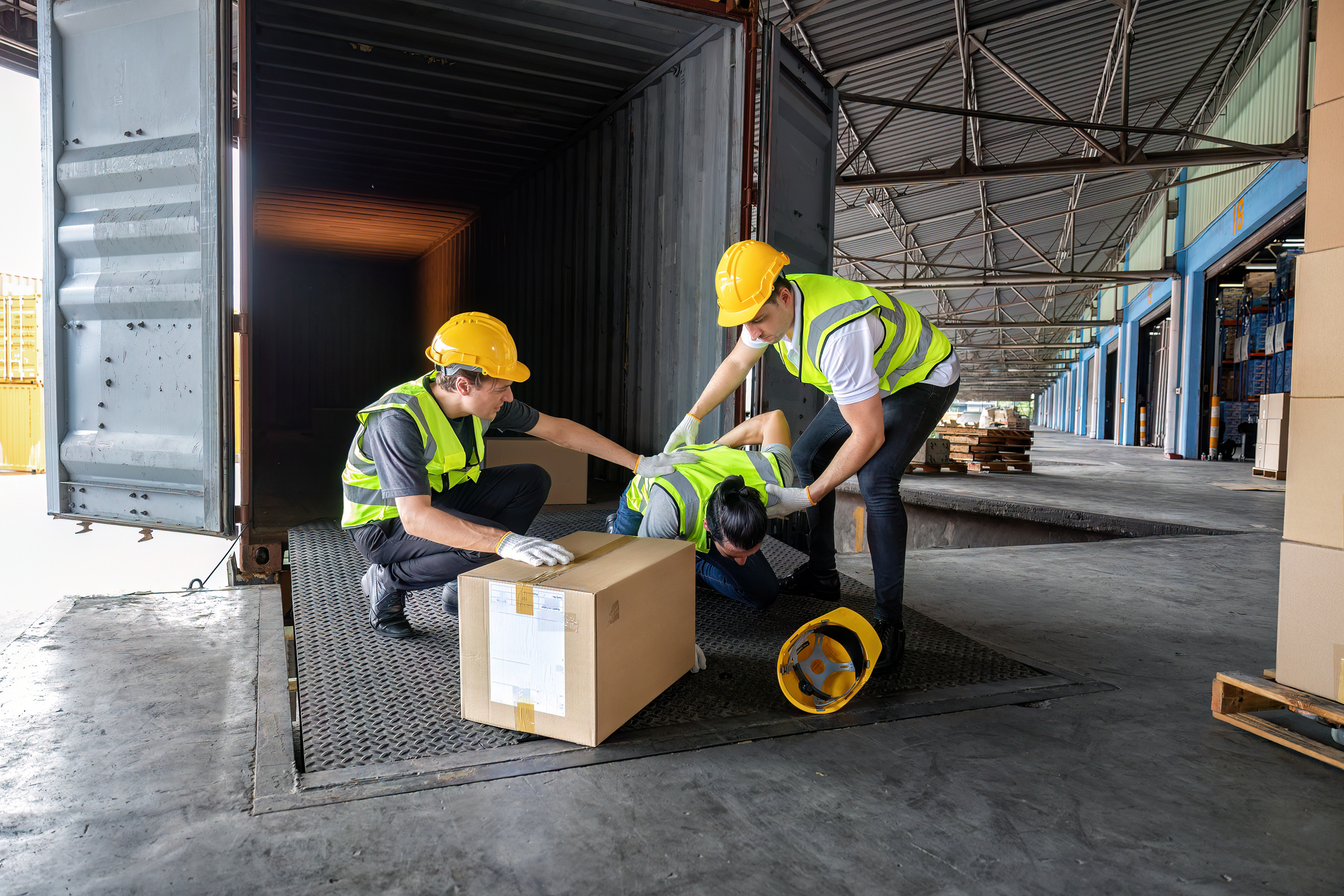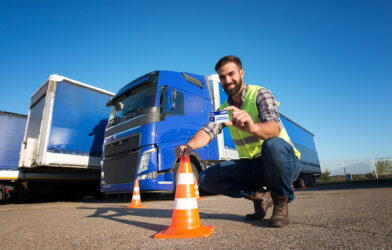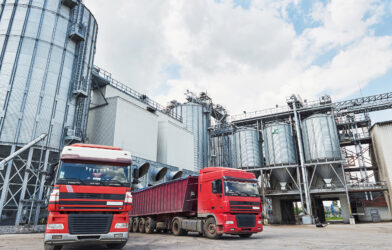There has been a rise lately around insecure loads on open deck trailers. In one case a few years back, a driver in Georgia was stopped and heavily ticketed when it was discovered the 90,000 excavator he was hauling was completely unsecured. His excuse was the weight of the machine would hold it to the trailer.
The rules for securing loads to a flat deck vary a bit between Canada and the US, with Canadian rules being a bit more restrictive. In general terms, if you secure a load legal for Canada, you should have no problems in the US.
There are 2 methods of securing freight to an open deck trailer: Direct securement (chains and binders), and indirect securement (straps). Of the 2, indirect securement is the most common, and this is where most of the insecure load tickets and incident occur, so we’ll go over that one first.
So how do you decide when to use chains and when to use straps? Chains are used almost exclusively for vehicles. Cars, trucks, vans, construction equipment, etc. pretty much everything else can be strapped. One exception is rail containers. If you’re hauling an empty rail container on the deck, you can secure it with the appropriate number of straps, as the container is considered cargo. However, it the container is loaded at all, even with a single box, the container is now considered intermodal, and must be secured to the deck with chains on all 4 corners.
When using straps to secure a load, you need to know the weight and length of what you are strapping. The WLL (Working Load Limit) of most straps is 5,400 lbs, so you must have enough straps to properly secure the weight. If what you’re securing weight 10,900 lbs, then it will require a minimum of 3 straps, as 2 straps will only hold 10,800.
Before you start strapping a load, inspect your straps for any nicks, cuts, abrasions, holes, or anything that looks out of the ordinary. If you find any of these conditions, replace the strap immediately, as it’s WLL has been compromised to a certain extent.
The number of straps is also determined by the length of what you are securing. You need 2 straps for the first 10 feet, and 1 more strap for each additional 10 feet. So if the item is 50 feet long, you need at least 6 straps, regardless of how light it might be. If it’s a 50 ft long 2X4 weighting 50 lbs, you still need 6 straps for the length.
Another strapping requirement is “tier strapping”, which some people call “belly strapping”. Tier strapping is used when the load is over 6 ft tall, or has multiple layers. As a rule of thumb, after the first 4 layers, or 6 feet in height, you need to use at least 1 strap over each object and tighten the strap down. Once the rest of the load is in the trailer, strap it down using the appropriate number of straps for the total weight, and length of each object. If there is any doubt in your mind that you may need more straps, then use more straps. You’ll never get a ticket for having too many straps.
Belly strapping is usually used when the load is low to the deck, and round. Take the item to be belly strapped and throw the strap over it. Then feed the strap under it, and go over it again, so the strap is wrapped around the item, then tighten the strap.
When securing the straps, both the hook and loose end must be attached to a proper contact point. All such points will have a WLL rating embossed on it someplace. In most cases, the WLL will be the same as your straps, but not always, so make sure you check the WLL, and adjust your strap count accordingly, using the most restrictive limit. If your strap has a WLL of 6,500 lbs, but the winch has a WLL of 5,400, then the limit on that strap is equal to the weakest part, in this case the winch. One time I saw a driver had run 2 straps into the same winch. Never ever EVER do this! All it does is give you a false sense of security, as the WLL for those straps is not 10,800. Because they are both in a single winch, the 2 straps have a combined WLL of 5,400.
If the freight you’re securing has any sharp edges, or if it’s susceptible to being damaged when the straps are tightened, you will need to place edge protectors between the freight and the straps. This spreads the force of the straps over a greater area, reducing the risk of damage. For a light load, such as Styrofoam, you can’t tighten the straps too much or you’ll damage the load. To help keep everything in place, you can cross strap the front and the back. To cross strap, a 2 inch strap and ratchet are the best. Start at the rear of the load and throw the strap diagonally to the right, so it just catches the top corner of the load. Secure the hook to the trailer, and pull the loose end diagonally to the right and secure it with a portable ratchet, then do the same for the left side, and the front of the trailer. Note that these straps don’t really count for securement purposes, they are mainly to help prevent the freight from sliding back and forth. When you’re finished, there should be a big “X” across the front and back of your trailer.














Comments are closed